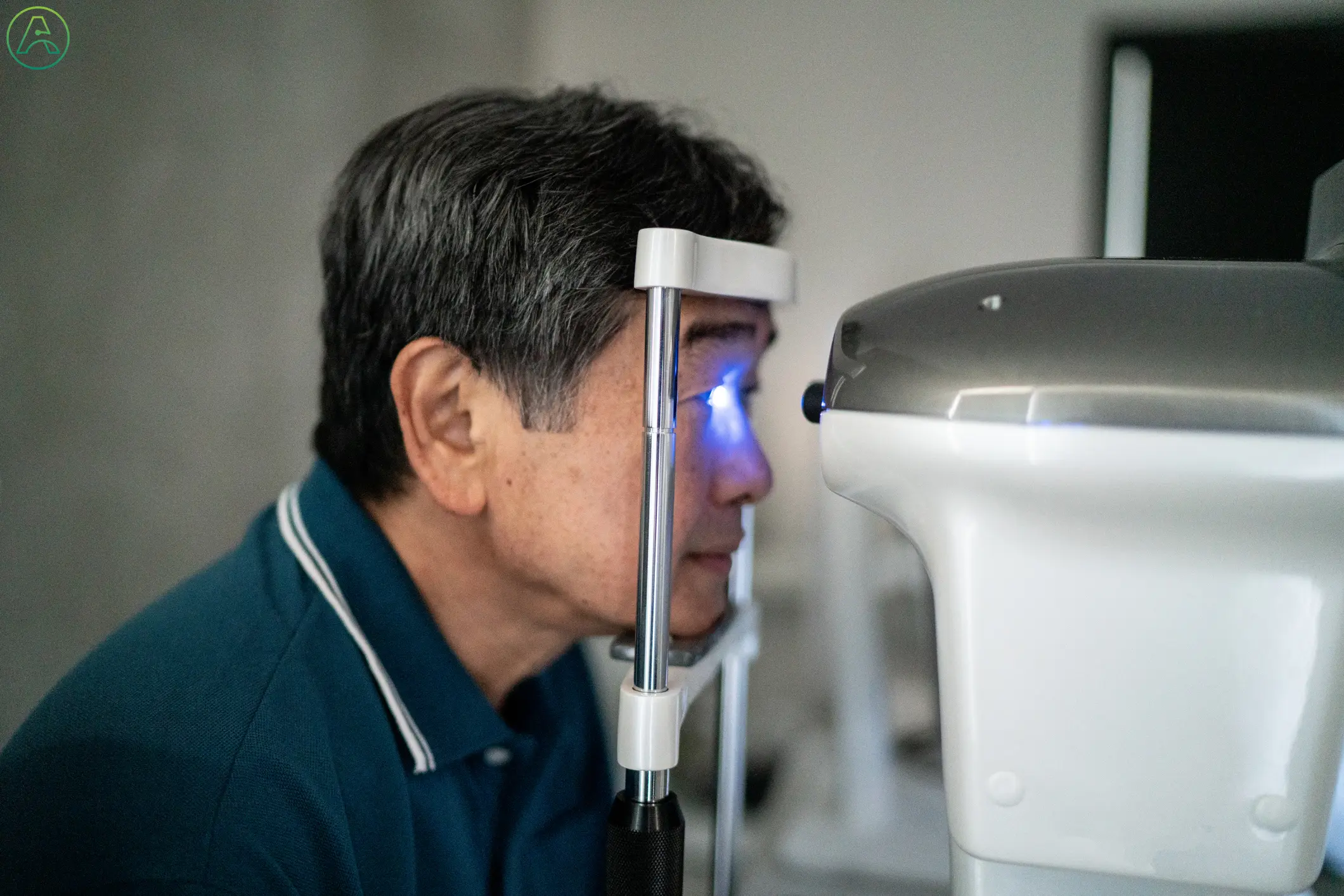The National Institute of Health (NIH) predicts that the number of people with visual impairment will double by 2050 after the rest of the Baby Boomer generation reaches age 65 in 2029.
With cataracts leading the list of age-related preventable blindness, it is essential to understand the symptoms and early signs of cataracts. Today’s article answers the following questions about cataracts:
How do I know if I have cataracts?
What are the symptoms of nuclear cataracts?
What are the symptoms of cortical cataracts?
What are the symptoms of posterior subcapsular cataracts?
What are the symptoms of pediatric or congenital cataracts?
How are cataracts treated?
How often should I see my eye doctor?
Where can I find a cataract specialist near me?
Where can I get more information about cataracts?
How do I know if I have cataracts?
Vision changes are a normal part of getting older, but you may find yourself squinting more than usual, struggling to read in low light, or having difficulty driving at night. This makes us all ask, “Do I have cataracts?”
From the Medieval Latin cataracta, a cataract is a problem with the eye's lens. Sometimes considered an “old age eye problem,” cataracts are often unnoticed in their early stages. Luckily, most cataracts are preventable, and even the most serious types of cataracts can be treated with surgery.
No matter your age, you should have your vision checked regularly. For people 65 and older, the recommendation is once per year. People younger than 65 should get an eye exam at least once every two years, but more often if they have a family history of cataracts or start experiencing any cataract symptoms.
Cataract symptoms include:
Cloudy or blurry eyesight
Difficulty with night vision
Double vision
Faded colors
Gray film over eyes
Halos around lights
As discussed in The 7 Most Important Things to Know About Cataracts, there are four primary types of cataracts: nuclear, cortical, posterior subcapsular, and pediatric or congenital cataracts. Let’s dive into the symptoms of each.
What are the symptoms of nuclear cataracts?
A nuclear cataract is a cataract that is located deep in the center of the lens, in the area called the nucleus. According to the University of Michigan Health System, some patients compare the effects of nuclear cataracts to looking through a dirty window.
In the early stages, a nuclear cataract may cause objects far away to be blurry but close objects remain clear. Over time, the lens turns yellow or brown, which may affect both eyesight and color vision.
What are the symptoms of cortical cataracts?
Cortical cataracts develop in the edges of the lens called the cortex. They then move towards the center like spokes on a wheel. There are two types of cortical cataracts.
Anterior cortical cataracts form in front of or inside the lens.
Posterior cortical cataracts form under the lens.
Early signs of cortical cataracts include:
Cloudy vision regardless of distance
Colors becoming difficult to tell apart
Difficulty with depth perception
Double vision
Glare from lights, either in the form of “halo” shapes or in painful light sensitivity
What are the symptoms of posterior subcapsular cataracts (PSC)?
Posterior subcapsular cataracts (PSC) develop in the rear of the lens. PSCs can develop quickly over a few months with symptoms including:
Decreased close-up vision
Glare
Halos around lights
Light sensitivity
This type of cataract often affects reading vision and tends to grow faster than other kinds of cataracts.
Posterior subcapsular cataracts are rare, and generally affect people with a range of preexisting medical conditions and risk factors. PSCs are most common in people with diabetes or people who take steroids, and tend to affect younger people more than those 65 or older.
What are the symptoms of pediatric or congenital cataracts?
Pediatric cataracts, or cataracts that affect children and infants, are very rare. There are two types:
Congenital cataracts are present at birth or infancy.
Developmental, infantile, or juvenile cataracts develop in older babies or children.
Symptoms are most often noticed at doctor check-ups and may include:
Cloudy patches in the lens
Squinting
Wobbling eyes
Congenital cataracts don’t always affect vision, and they are usually removed as soon as doctors discover them. According to the Mayo Clinic, congenital cataracts may be the result of conditions including:
Myotonic dystrophy
Galactosemia
Neurofibromatosis type 2
Rubella
How are cataracts treated?
Cataract treatment depends on the type of cataract, its location, and how much it affects your vision. If you have an early-stage cataract that isn’t causing any changes to your vision, your doctor may prefer to monitor it rather than immediately performing surgery.
Surgery is the most common treatment for cataracts that affect vision, but the surgical method will also depend on the type, location, and symptoms of the cataract.
To learn more about cataract treatment, see Cataract Surgery: Resources for Cataract Treatment and Diagnosis.
How often should I see my eye doctor?
The American Optometric Association (AOA) suggests the following frequency for eye exams:
Birth through age two should have an eye exam once or twice per year.
At least one exam between the ages of three and five years old.
Annually between 1st and 12th grades.
At least every two years between ages 18 and 64.
Annual eye appointments beginning at age 65.
If you notice any of the symptoms of cataract eye between appointments, contact your eye doctor.
Where can I find a cataract specialist near me?
Cataracts are usually removed through surgery. Ability Central offers a searchable database of nonprofits that specialize in connecting people with local resources for low vision conditions like cataracts.
In addition, the American Academy of Ophthalmology (AAO) offers a provider finder.
Where can I get more information about cataracts?
To learn more about cataracts, see:
Ability Central also offers a library of other Low Vision resources.



